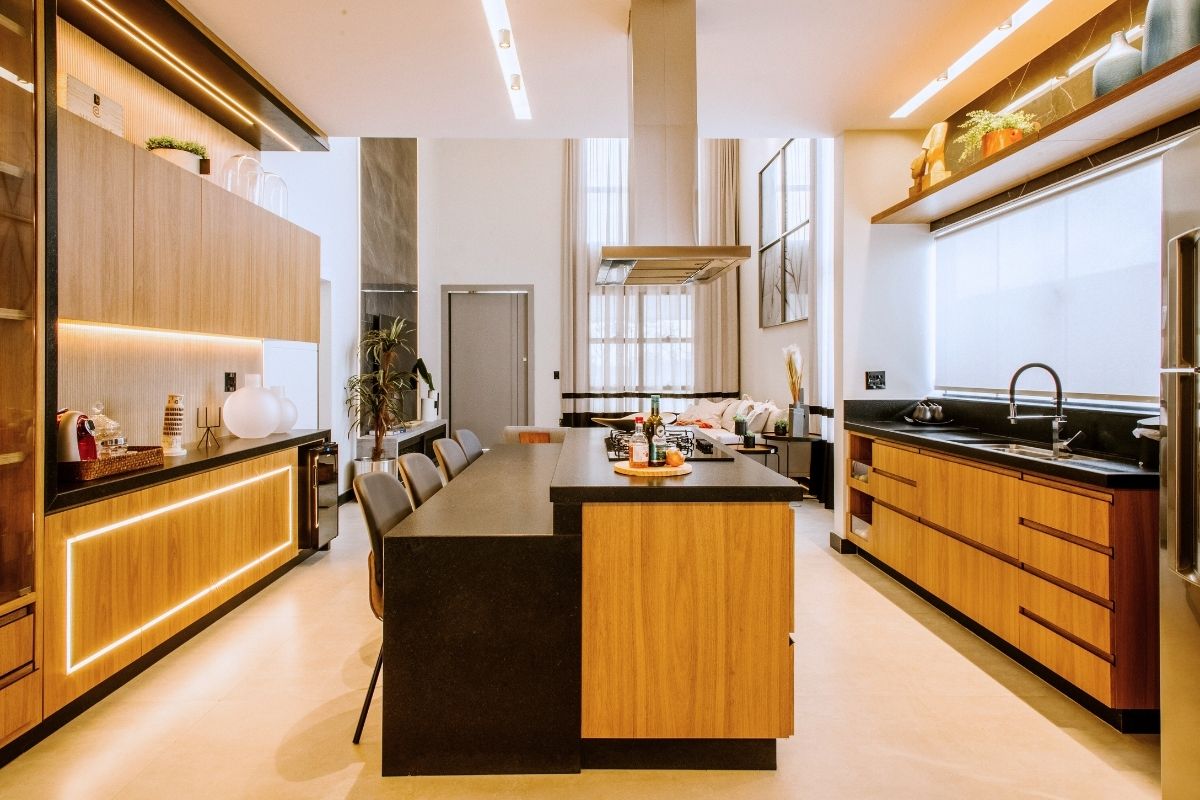Benefits of Using Veneer in Furniture and Cabinetry

Choosing the right material for furniture uses and cabinetry can make a significant difference in terms of aesthetics, durability, and cost. One popular option in modern woodworking is wood veneer. For anyone wondering about the benefits of wood veneer, it offers a practical and stylish alternative to solid wood furniture without compromising on the natural beauty of timber.
What is Wood Veneer?
Wood veneer refers to thin slices of wood that are sliced from solid wood pieces and then glued onto a substrate such as plywood, MDF, or particleboard. These veneer sheets allow furniture makers to showcase authentic grain patterns and the natural look of timber while using less wood overall. Veneer is often made from fine wood and real wood, providing the warmth and elegance of solid timber but in a more cost-effective and environmentally friendly way.
Unlike laminate, which imitates the look of wood using printed patterns, timber veneer retains the natural textures and patterns of the original log. This makes it an attractive choice for both residential and commercial cabinet and furniture projects. Read more about what wood veneer is and how it's made.

Advantages of Wood Veneer in Furniture
Aesthetic Appeal and Natural Look
One of the most significant benefits of using veneer is its aesthetic appeal. Wood veneer offers a wide range of grain patterns and colours that may be difficult to achieve with solid wood. Veneer furniture allows craftsmen to create elegant finishes and decorative details.
Because veneer sheets are made from thin slices of wood, it is possible to use exotic wood species and fine wood in ways that would be way too costly if using solid wood pieces. This makes veneer furniture a practical solution for achieving a high-end, custom look without the full cost of solid timber.
Efficient Use of Wood
Using wood veneer allows for efficient timber use, creating beautiful surfaces with minimal material. Large panels or decorative surfaces can be covered with a thin layer of wood instead of solid planks. This minimises wood waste and supports a more environmentally friendly approach to timber use.
By slicing timber into very thin sheets, manufacturers can create multiple veneer sheets from a single log. This efficient use ensures that less wood is wasted, making wood veneers an attractive choice for sustainable woodworking projects.
Cost-Effectiveness
Using wood veneer is a cost-effective option because veneer sheets are made from thin slices of timber, meaning less wood is needed overall. This not only reduces the material cost but also allows designers and furniture makers to use rare or exotic wood species without the high expense of full solid wood pieces.
Durability and Stability
Veneer is strong enough to last as long as solid wood when applied to a stable core panel such as plywood, MDF, or particleboard. Unlike solid wood, which can be prone to warping and splitting due to changes in humidity and temperature, veneer panels are less prone to warping.
Additionally, veneer allows furniture to be sanded and refinished multiple times, extending its lifespan. This makes veneer furniture suitable for high-use applications while maintaining the quality and craftsmanship of solid wood.
Versatility in Design
Veneer furniture is typically quite flexible for creating intricate designs, curves, or decorative details. The thin layer of wood can be applied to flat or shaped surfaces, making it ideal for cabinet fronts, feature walls, and custom joinery.
Veneer offers a wide range of options for combining different wood species, grain patterns, and colours in a single piece. Techniques such as marquetry, inlay, and parquet patterns are easier to achieve with timber veneer than with solid planks, providing versatility for creative woodworking projects.
Types of Veneer and Their Applications
Veneer sheets can be applied to various substrates, including plywood, MDF, and particleboard, creating veneer panels suitable to be used in residential and commercial projects. Veneers provide the benefits of real wood while allowing furniture makers to achieve flat panels, cabinet doors, and other applications without the challenges of using full solid wood.
Some popular types of timber veneer include oak veneer, walnut, maple, and exotic species. Each provides unique patterns and textures, enhancing the natural look and aesthetic appeal of furniture or cabinetry.
Why Choose Wood Veneer
Choosing wood veneer allows designers, architects, and homeowners to enjoy the beauty of real wood while benefiting from the cost-effectiveness, versatility, and durability of engineered applications. Veneer furniture delivers the craftsmanship of solid wood, efficient use of natural wood, and aesthetic appeal suitable for modern interiors.
Whether for solid wood furniture alternatives, cabinet doors, or decorative panels, the benefits of using veneer make it a smart, sustainable, and stylish choice in the world of wood products.
Related articles

Blog title heading will go here

Blog title heading will go here


